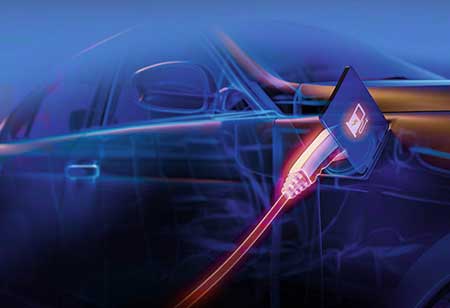THANK YOU FOR SUBSCRIBING
THANK YOU FOR SUBSCRIBING
Be first to read the latest tech news, Industry Leader's Insights, and CIO interviews of medium and large enterprises exclusively from Auto Tech Outlook

By
Auto Tech Outlook | Friday, August 16, 2024
Stay ahead of the industry with exclusive feature stories on the top companies, expert insights and the latest news delivered straight to your inbox. Subscribe today.
The automotive industry faces cybersecurity challenges due to connected vehicles' complexity, necessitating rigorous testing, collaboration, innovative methodologies, and regular updates, as well as Europe's GDPR and Cybersecurity Act.
FREMONT CA: The automotive industry is experiencing a profound transformation, propelled by integrating advanced technologies. Connected vehicles, which offer significant safety, convenience, and efficiency advancements, are leading this revolution. However, the increased connectivity of these vehicles also introduces new challenges, particularly concerning cybersecurity.
The Growing Threat Landscape for Connected Vehicles
Connected vehicles, characterised by their advanced software systems, wireless communication networks, and sensitive data, resemble sophisticated computers on wheels. This complexity renders them appealing targets for cybercriminals. The ramifications of a successful cyberattack on a connected vehicle are extensive and alarming. For instance, hackers could gain control over vehicle systems, potentially leading to accidents and fatalities. Additionally, the theft of confidential personal information, such as driving habits and location data, poses significant privacy risks. Financial losses are another consequence, as cyberattacks can inflict substantial damage on both individuals and manufacturers. Furthermore, large-scale attacks could disrupt critical infrastructure and transportation systems, highlighting the urgent need for effective cybersecurity measures.
To counter these risks, rigorous cybersecurity testing is essential. This testing involves identifying and addressing vulnerabilities within vehicle systems to prevent exploitation. Key areas of focus include software testing, where detecting and resolving bugs that attackers could target is crucial. Network security testing evaluates the security of vehicle communication networks against unauthorised access. Hardware testing assesses the security of physical components, such as sensors and control units. In contrast, over-the-air (OTA) update testing ensures the integrity and security of software updates delivered wirelessly.
Europe has proactively addressed the cybersecurity challenges associated with connected vehicles. The General Data Protection Regulation (GDPR) sets a robust standard for personal data protection, while the Cybersecurity Act provides a comprehensive framework for managing cybersecurity risks. The UNECE WP.29 Working Party on Vehicle Cybersecurity is also developing global technical regulations to enhance vehicle cybersecurity. In compliance with these regulations, European automakers heavily invest in cybersecurity testing. This includes threat modelling to identify potential threats and vulnerabilities, vulnerability assessments to detect weaknesses within vehicle systems, penetration testing to simulate real-world attacks and evaluate system resilience, and red teaming, which employs skilled hackers to test and fortify defences.
The automotive industry is embracing advanced cybersecurity testing techniques. These include fuzz testing, which generates random inputs to uncover unexpected behaviours; static and dynamic analysis, which involves analysing code for vulnerabilities both without execution (static) and while running (dynamic); IoT security testing, specifically designed to assess the security of connected devices; and artificial intelligence (AI)-powered testing, which leverages AI to automate testing processes and detect complex vulnerabilities.
Future advancements in this field are anticipated to include several key developments. Enhanced collaboration among industry stakeholders will facilitate information sharing and best practices. Innovative testing methodologies will be employed to identify and mitigate emerging threats effectively. Continuous monitoring and regular updates will proactively address vulnerabilities as they arise. By investing in comprehensive cybersecurity testing, the automotive industry can foster consumer trust and safeguard the public against cyberattack risks. As the prevalence of connected vehicles grows, maintaining a strong focus on cybersecurity will remain a critical priority.
 Copyright © 2025 AutoTech Outlook. All Rights Reserved | Privacy Policy | Subscribe | Sitemap | About us | Feedback Policy | Editorial Policy
Copyright © 2025 AutoTech Outlook. All Rights Reserved | Privacy Policy | Subscribe | Sitemap | About us | Feedback Policy | Editorial Policy 



